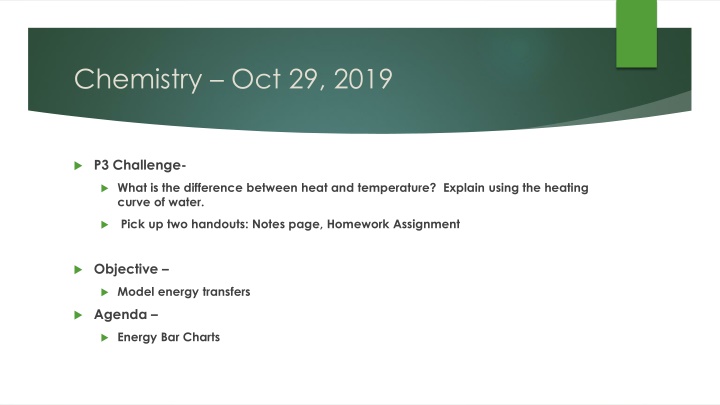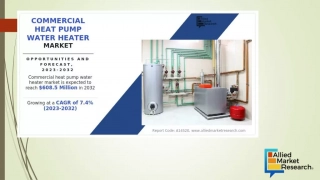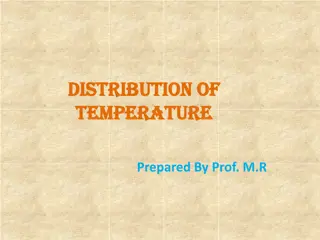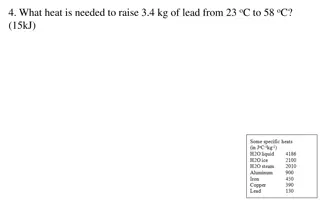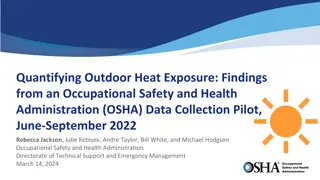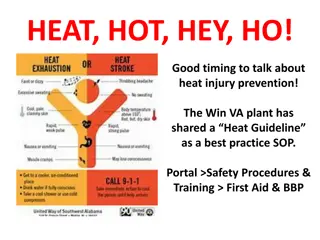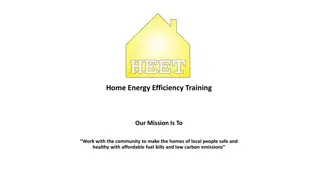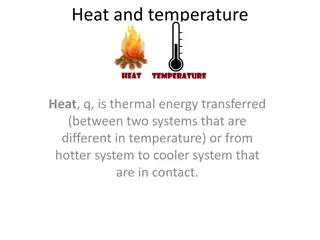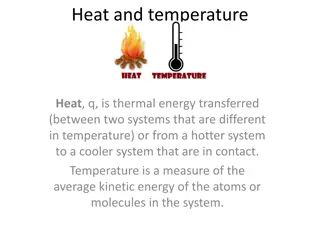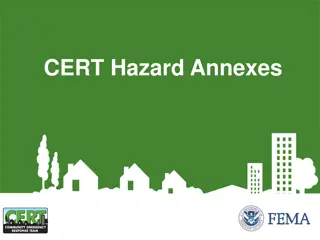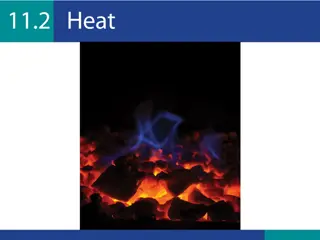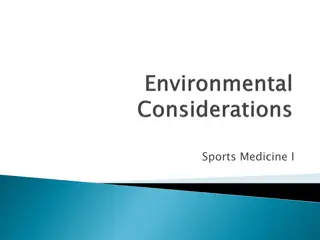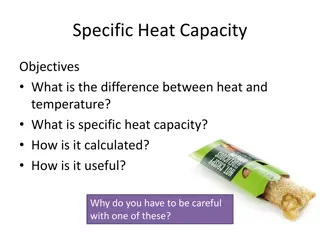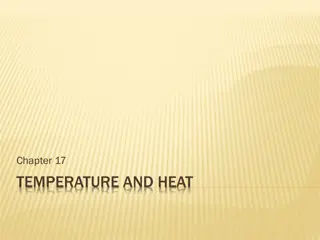Difference Between Heat and Temperature: Explained with Water's Heating Curve
Heat and temperature are often confused, but they represent different concepts in thermodynamics. Heat refers to energy transfer, while temperature measures the average kinetic energy of particles. By examining the heating curve of water, we can see how heat is absorbed or released during phase changes, influencing temperature. This visual representation helps clarify the distinction between heat and temperature in a practical context.
Download Presentation

Please find below an Image/Link to download the presentation.
The content on the website is provided AS IS for your information and personal use only. It may not be sold, licensed, or shared on other websites without obtaining consent from the author.If you encounter any issues during the download, it is possible that the publisher has removed the file from their server.
You are allowed to download the files provided on this website for personal or commercial use, subject to the condition that they are used lawfully. All files are the property of their respective owners.
The content on the website is provided AS IS for your information and personal use only. It may not be sold, licensed, or shared on other websites without obtaining consent from the author.
E N D
Presentation Transcript
Chemistry Oct 29, 2019 P3 Challenge- What is the difference between heat and temperature? Explain using the heating curve of water. Pick up two handouts: Notes page, Homework Assignment Objective Model energy transfers Agenda Energy Bar Charts
Type of Energy Three Ways to Store Energy 1) Thermal Energy (Eth): The energy stored by movement of particles Related to both mass & velocity (temperature = kinetic energy) 2) Phase Energy (Eph): The energy stored by arrangement/interactions between particles More attracted = decreased energy 3) Chemical Energy (Ech): The energy stored by chemical bonds
Energy Chart Diagrams How does the temperature vary when heating ice to water vapor? (Boiling ice lab) C Region A Low temp plateau Region B Temp change B Region C High temp plateau A
How to use Energy Bar Charts 1) For the initial state: e.g. Room temp water Draw a bar for thermal energy Eth based on the temperature of a substance: >100C = 4 bars; bars; = bar. Hot = 3 bars; RT = 2 Cold = 1 bar; Very cold (<0C) Draw a bar for Phase energy Eph based on the state of a substance: Solids = 1 bar Liquids = 2 bars Gases = 4 bars
How to use Energy Bar Charts 2) For the final state: e.g. hot water Draw a bar for thermal energy Eth based on the temperature of a substance: >100C = 4 bars; bars; = bar. Hot = 3 bars; RT = 2 Cold = 1 bar; Very cold (<0C) Draw a bar for Phase energy Eph based on the state of a substance: Solids = 1 bar Liquids = 2 bars Gases = 4 bars
How to use Energy Bar Charts Identify the substance by name in the circle which represents the system. Determine if energy is flowing into the system, or out of the system and how many bar of energy are transferred. H2O Eg one bar is added to the system. Represent the energy transfers to or from the system with bars drawn over the edge of the circle with an arrow showing the direction
Energy Chart Diagrams Example: On the Slope B, the temperature was changing and the system stored Eth H2O On the Plateau C, the phase was changing and the system was storing Eph. H2O
Energy Chart Diagrams How does energy change when warm humid air freezes on your window in winter? 4 units Humid air Particle Explanation: warm water particles in the air cool down to 0 C and then align into a solid.
Exit Slip and Assignment Draw an energy bar diagram for blacktop pavement that heats up from 5oC in the morning to 40oC in the afternoon. What s Due? (Pending assignments to complete.) Energy Charts Worksheet What s Next? (How to prepare for the next day) Energy, p38-45
